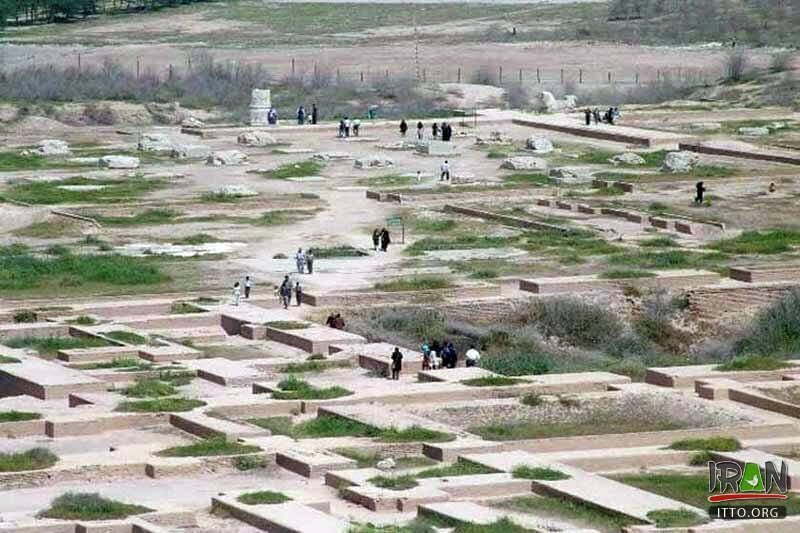It is located near the UNESCO-registered Susa, the UNESCO-registered Tchogha Zanbil, and the UNESCO-registered Shushtar Historical Hydraulic System, and is some 18 kilometers from the city of Dezful along the banks of the Karkheh River.

In the Elamite era, Karkheh was covered with palm groves and its woods were so famous that Ashurbanipal referred to it as the ’sacred Elamite woods’. The ancient city possibly has pre-Sasanian foundations, but the actual construction is attributed to Shapur I the Great (r. 240/42 – 270/72).
Its ruins were largely unexplored by archaeologists, except for two brief campaigns in the 1950s. The first conclusions were fascinating; it is a Sasanian city, founded in the fourth century CE and surrounded by a large, rectangular wall. The enceinte, which is about four kilometers from north to south and one kilometer from east to west, can be seen over large distances.
A large building, excavated in 1950, may have been his palace. The walls were covered with plaster, the building was surrounded by a garden, and it contained a transversal barrel-vault of a type that was to become popular in Christian churches, but has not been attested earlier than Iwan-e Karkheh. This building, which also contained a square hall under a dome, later served as a mosque.
The Sassanid archaeological landscape also represents a highly efficient system of land use and strategic utilization of natural topography in the creation of the earliest cultural centers of the Sassanid civilization.
Under Sassanids, Persian art and architecture experienced a general renaissance. Architecture often took grandiose proportions such as palaces at Ctesiphon, Firuzabad, and Sarvestan that are amongst highlights of the ensemble.
Crafts such as metalwork and gem-engraving grew highly sophisticated, yet scholarship was encouraged by the state. In those years, works from both the East and West were translated into Pahlavi, the language of the Sassanians. Rock-carved sculptures and bas-reliefs on abrupt limestone cliffs are widely deemed as characteristics and striking relics of the Sassanian art, top examples of which can be traced at Bishapur, Naqsh-e Rostam, and Naqsh-e Rajab in southern Iran.
At the time of Shapur I, the empire stretched from Sogdiana and Iberia (Georgia) in the north to the Mazun region of Arabia in the south; in the east, it extended to the Indus River and in the west to the upper Tigris and Euphrates river valleys. In 2018, UNESCO added an ensemble of Sassanian historical cities in southern Iran — titled “Sassanid Archaeological Landscape of Fars Region”– to its World Heritage list. The ensemble is comprised of eight archaeological sites situated in three geographical parts of Firuzabad, Bishapur, and Sarvestan. It reflects the optimized utilization of natural topography and bears witness to the influence of Achaemenid and Parthian cultural traditions and of Roman art, which later had a significant impact on the architecture and artistic styles of the Islamic era.
Efforts made by the Sassanids also yield a revival of Iranian nationalism took place, for example, Zoroastrianism was declared as the state religion.
According to the Circle of Ancient Iranian Studies, like other Iranian cities in the 7th century Iran, Iwan-e Karkheh fell into Arab hands after a long and bloody siege. The city more or less had the same fate as the rest of Iran during the Arab occupation; it was pillaged, most of the male population were slaughtered, children and women were taken into slavery and most of the city was completely destroyed.

